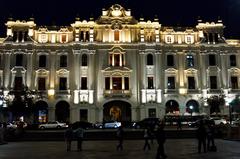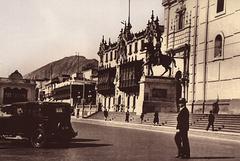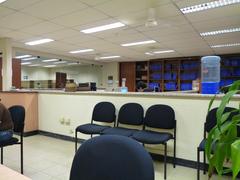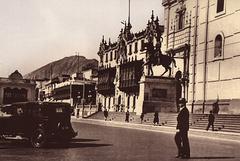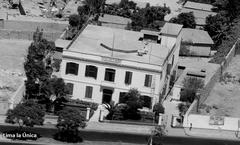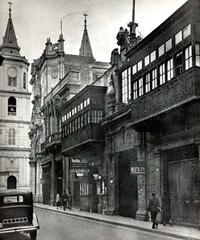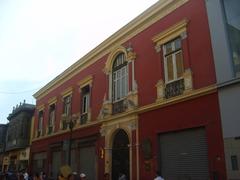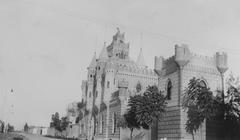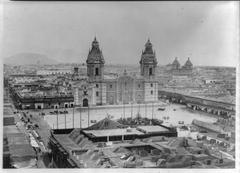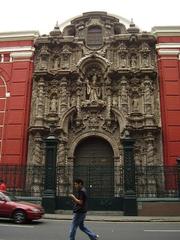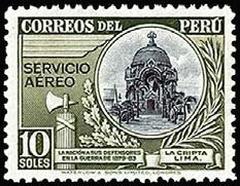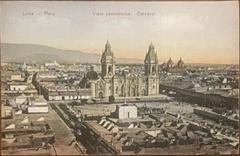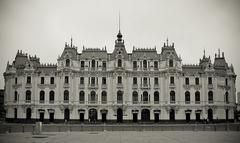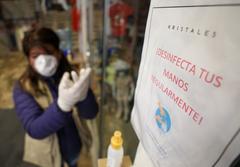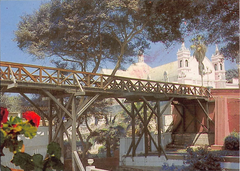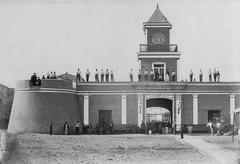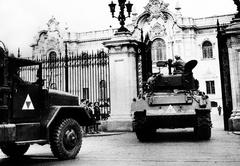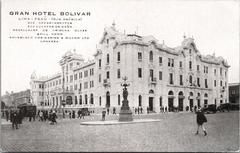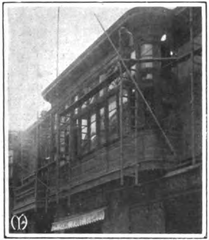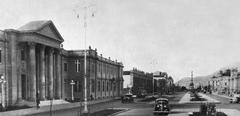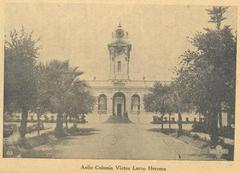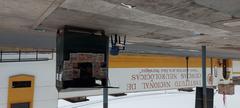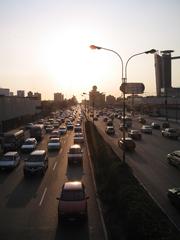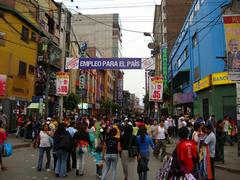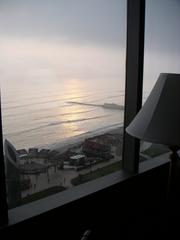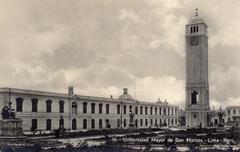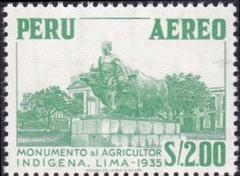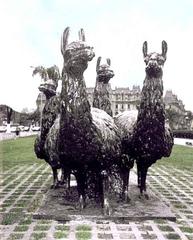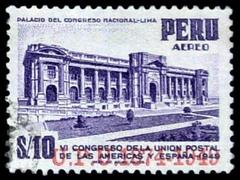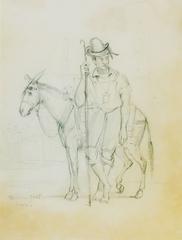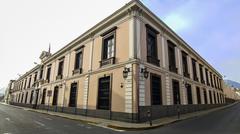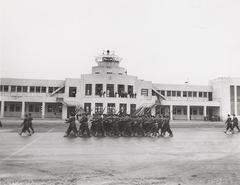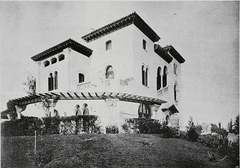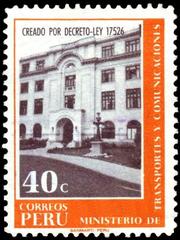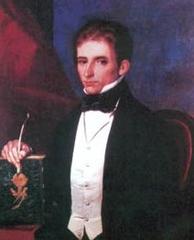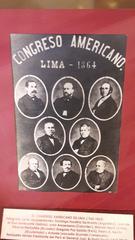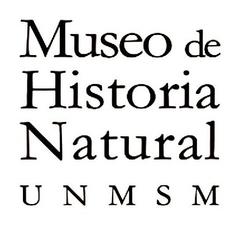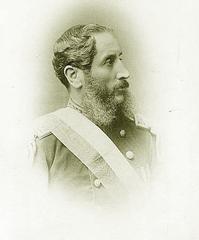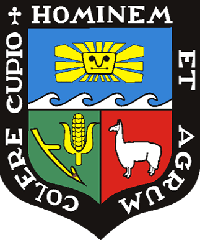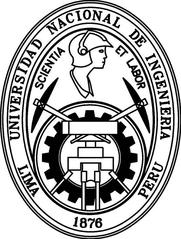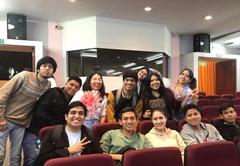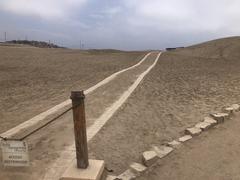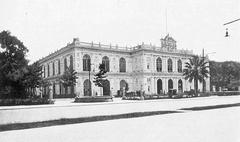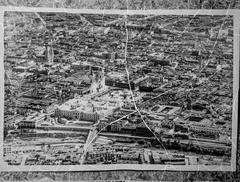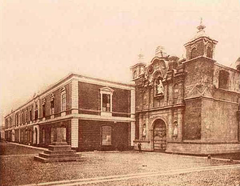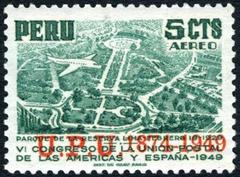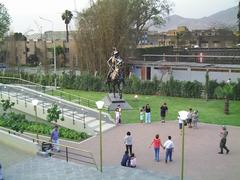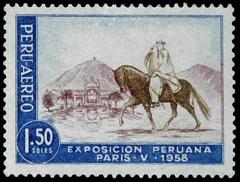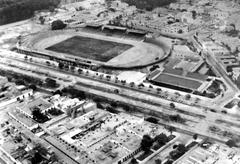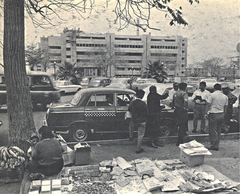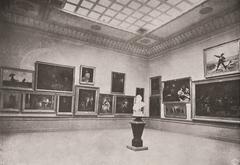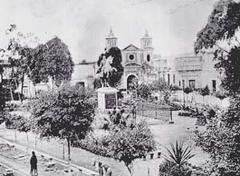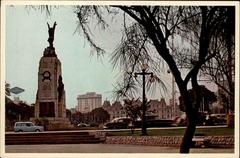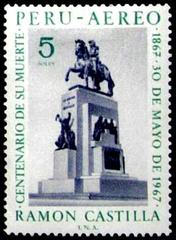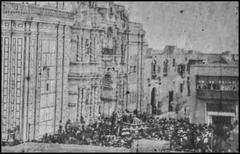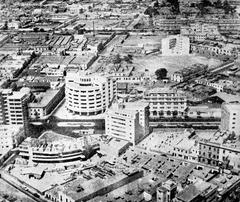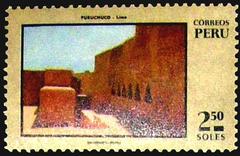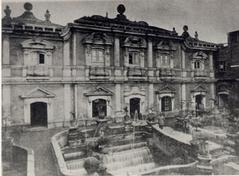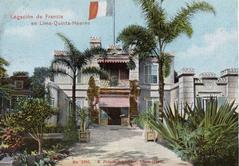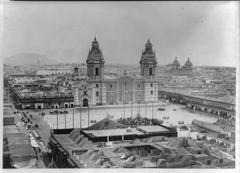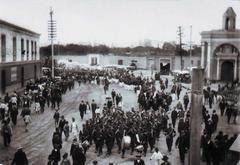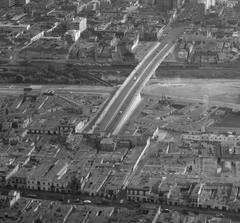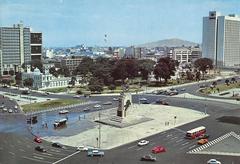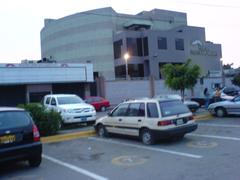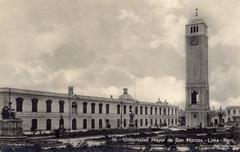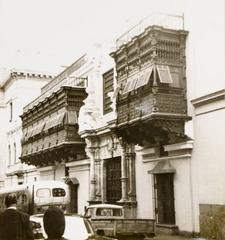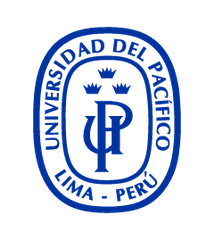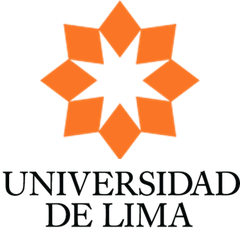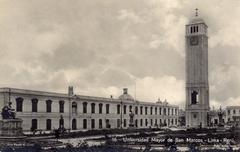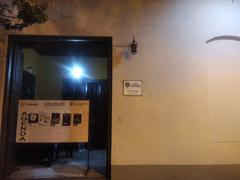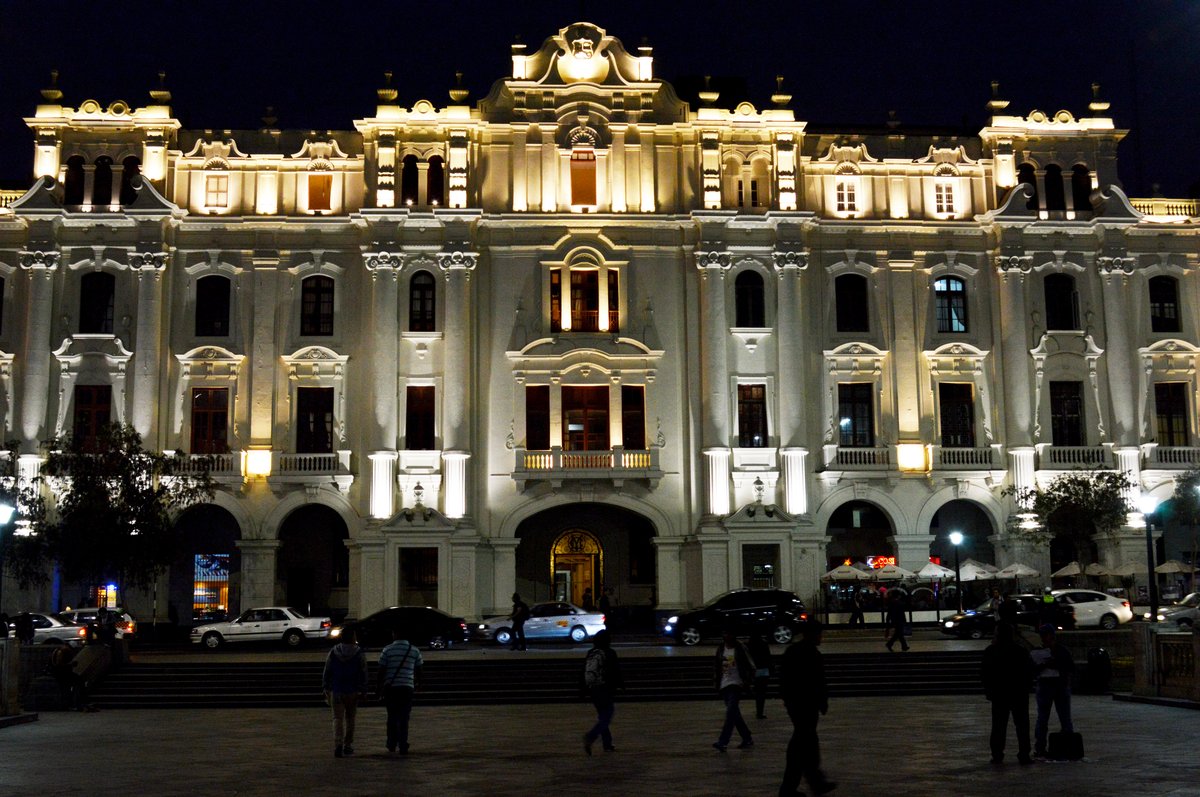
Visiting Plaza San Martín in Lima: Hours, Tickets, and Historical Insights
Date: 16/07/2024
Introduction
Plaza San Martín, situated in the historic heart of Lima, Peru, stands as a poignant symbol of the nation’s rich cultural and political heritage. Officially inaugurated on July 27, 1921, the plaza commemorates the centenary of Peru’s independence from Spanish rule (Peru Travel). This iconic landmark, named after General José de San Martín, a pivotal figure in South America’s independence movement, represents a crucial chapter in Peru’s history. The plaza’s design, inspired by European urban aesthetics and brought to life by Spanish architect Manuel Piqueras Cotolí and Peruvian engineer Claudio Sahut, features a central equestrian statue of General San Martín sculpted by Mariano Benlliure (Lima Easy). Over the decades, Plaza San Martín has evolved into a vibrant cultural and social hub, hosting public events, political rallies, and social gatherings, making it an essential destination for both locals and tourists alike (El Comercio). As a UNESCO World Heritage Site, it continues to attract visitors eager to explore its rich history, architectural marvels, and the dynamic atmosphere of downtown Lima (UNESCO).
Table of Contents
- Introduction
- Early Beginnings and Foundation
- Design and Construction
- Inauguration and Early Years
- Architectural Significance
- Role in Peruvian History
- Cultural Impact
- Preservation and Restoration
- Visitor Information
- Special Events and Guided Tours
- Conclusion
- References
Early Beginnings and Foundation
Plaza San Martín, located in the historic center of Lima, Peru, is a significant landmark with a rich history dating back to the early 20th century. The plaza was inaugurated on July 27, 1921, as part of the celebrations marking the centenary of Peru’s independence from Spanish rule. The site chosen for the plaza was previously occupied by the San Juan de Dios Hospital, which was demolished to make way for the new public space (Peru Travel).
Design and Construction
The design of Plaza San Martín was the result of a competition won by the Spanish architect Manuel Piqueras Cotolí. His vision for the plaza was inspired by European urban design, particularly the grand squares of Spain and France. The construction of the plaza was overseen by the Peruvian engineer Claudio Sahut, who ensured that Piqueras Cotolí’s design was faithfully executed. The central feature of the plaza is the equestrian statue of General José de San Martín, the liberator of Peru, which was sculpted by the Spanish artist Mariano Benlliure (Lima Easy).
Inauguration and Early Years
The inauguration of Plaza San Martín was a grand event attended by numerous dignitaries, including President Augusto B. Leguía, who played a crucial role in the development of the plaza. The event was marked by speeches, parades, and the unveiling of the statue of General San Martín. The plaza quickly became a popular gathering place for the residents of Lima, serving as a venue for public events, political rallies, and social gatherings (El Comercio).
Architectural Significance
Plaza San Martín is surrounded by several notable buildings that contribute to its architectural significance. These include the Gran Hotel Bolívar, a luxurious hotel that opened in 1924 and has hosted numerous celebrities and dignitaries over the years. Another important building is the Club Nacional, a private social club founded in 1855, which moved to its current location on the plaza in the early 20th century. The plaza is also flanked by the Teatro Colón, a historic theater that has been a cultural hub for the city since its opening in 1914 (Peru This Week).
Role in Peruvian History
Throughout its history, Plaza San Martín has been a focal point for significant events in Peruvian history. During the 1940s and 1950s, the plaza was a center of political activity, with numerous protests and demonstrations taking place there. One of the most notable events was the 1948 coup d’état led by General Manuel A. Odría, which saw the plaza become a battleground between government forces and rebel troops. In more recent years, the plaza has continued to be a site for political and social activism, including protests against government corruption and social inequality (BBC News).
Cultural Impact
Plaza San Martín has also had a significant cultural impact on the city of Lima. The plaza has been featured in numerous works of literature, film, and art, often serving as a symbol of the city’s rich history and cultural heritage. The plaza’s central location and historical significance have made it a popular destination for tourists, who come to admire its architecture, learn about its history, and experience the vibrant atmosphere of downtown Lima (Lonely Planet).
Preservation and Restoration
In recent years, efforts have been made to preserve and restore Plaza San Martín to its former glory. The plaza was declared a UNESCO World Heritage Site in 1988 as part of the historic center of Lima, recognizing its cultural and historical importance. Restoration projects have focused on maintaining the plaza’s architectural integrity, including the cleaning and repair of the statue of General San Martín and the surrounding buildings. These efforts have ensured that the plaza remains a cherished landmark for future generations (UNESCO).
Visitor Information
Visiting Hours
The plaza is open to the public 24/7, but the surrounding buildings may have specific visiting hours.
Tickets
No tickets are required to access the plaza itself. However, nearby attractions like the Gran Hotel Bolívar may have entry fees.
Travel Tips
Visit early in the morning or late in the afternoon to avoid the crowds. Wear comfortable shoes, as you’ll likely spend a good amount of time walking.
Nearby Attractions
Don’t miss out on the historic Teatro Colón, the impressive Gran Hotel Bolívar, and the Club Nacional.
Accessibility
The plaza is wheelchair accessible, with ramps and flat surfaces throughout the area.
Special Events and Guided Tours
Plaza San Martín often hosts special events, including cultural festivals, concerts, and political rallies. Guided tours are available and offer deep insights into the history and significance of this iconic landmark. For photography enthusiasts, the plaza provides numerous picturesque spots, especially during the golden hours of sunrise and sunset.
Conclusion
Plaza San Martín remains a testament to Peru’s enduring spirit of independence and its rich cultural tapestry. From its grand inauguration in 1921 to its role as a focal point for political and social activism, the plaza has continually reflected the evolving narrative of Peruvian society (BBC News). The architectural grandeur of surrounding landmarks such as the Gran Hotel Bolívar and the Teatro Colón adds to its allure, offering a blend of historical and cultural experiences (Peru This Week). Efforts to preserve and restore the plaza ensure that it remains a cherished landmark for future generations, recognized globally by its designation as a UNESCO World Heritage Site (UNESCO). Whether you are a history enthusiast, a cultural explorer, or simply a traveler seeking to immerse yourself in the vibrant life of Lima, Plaza San Martín offers a unique and enriching experience. Visitors can enjoy its stunning architecture, partake in guided tours, and participate in the various events that bring the plaza to life throughout the year. For the latest updates and travel tips, don’t forget to download the mobile app Audiala and follow us on social media.
References
- Peru Travel. (n.d.). Exploring Plaza San Martín - History, Visiting Hours, and Must-See Attractions in Lima. https://www.peru.travel
- Lima Easy. (n.d.). Exploring Plaza San Martín - History, Visiting Hours, and Must-See Attractions in Lima. https://www.limaeasy.com
- El Comercio. (n.d.). Exploring Plaza San Martín - History, Visiting Hours, and Must-See Attractions in Lima. https://elcomercio.pe
- UNESCO. (n.d.). Exploring Plaza San Martín - History, Visiting Hours, and Must-See Attractions in Lima. https://whc.unesco.org
- BBC News. (n.d.). Exploring Plaza San Martín - History, Visiting Hours, and Must-See Attractions in Lima. https://www.bbc.com/news
- Peru This Week. (n.d.). Exploring Plaza San Martín - History, Visiting Hours, and Must-See Attractions in Lima. https://www.peruthisweek.com
